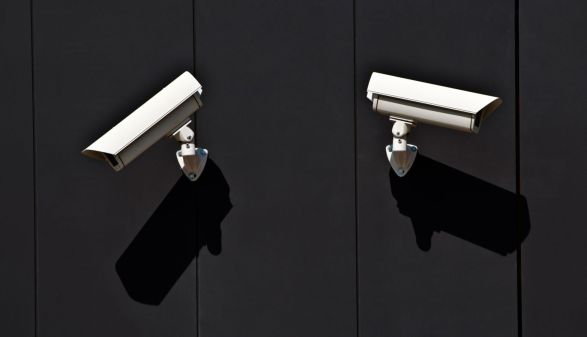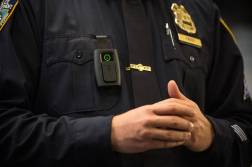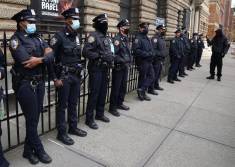Body-worn cameras reduced complaints and increased savings in Las Vegas police study

A new study on the effects of body-worn cameras at the Las Vegas Metropolitan Police Department (LVMPD) revealed that the technology significantly reduced civilian complaints against officers, officer use of force, and departmental costs.
The study, which began in 2014, was conducted by the University of Las Vegas Center for Crime and Justice Policy (CCJP) and CNA, a Virginia-based nonprofit. In this study, data was collected on 400 LVMPD officers, who were divided into one of two groups: those with body-worn cameras (BWCs) and those without.
According to the results, the officers who used BWCs received fewer civilian complaints than their counterparts. The officers with BWCs that generated at least one complaint decreased from 54.6 to 38.1 percent. By comparison, the officers in the control group that generated at least one complaint only decreased from 48 to 45.5 percent.
Additionally, police officers using BWCs were far less likely to engage in an incident with use of force than those without camera surveillance. The percent of officers with BWCs that generated at least one report for use of force saw an 11.5 percent decrease, but the officers without cameras increased their reported use of force from 26.3 to 27.3 percent.
“These results support the position that BWC may de-escalate aggression or have a ‘civilizing’ effect on the nature of police-citizen encounters,” the study reports.
Earlier this year, a similar study with the Metropolitan Police Department in D.C. concluded that BWCs didn’t produce any significant impacts on the area’s civilizing effect.
According to William Sousa, director of CCJP and a co-author of the study, the effects of BWCs are expected to vary across communities.
“It’s very place-specific,” Sousa told StateScoop. “For example, if you have a department that has very few problems related to complaints of misconduct, then you probably wouldn’t expect body-worn cameras to have much of an effect in reducing those things, because they weren’t that immediate of an issue to begin with.”
Because of the numerous factors that differ between communities, studies that provide underwhelming results for BWCs shouldn’t be seen as a discredit to the technology, Sousa said.
“Body-worn cameras can demonstrate a willingness on the part of the department to be transparent to the community. It can demonstrate a willingness on the part of the department to be accountable for officers,” said Sousa. “So, as the studies emerge, we might find that there are different impacts on such metrics as use of force and complaints of misconduct, but that doesn’t necessarily mean that the cameras don’t have a beneficial impact.”
‘Strong’ potential benefits
In addition to measuring data on officers’ conduct and civilian complaints, the authors of the study also interviewed officers at LVMPD and hosted focus groups to gauge the officers’ level of comfort and proficiency with body-worn cameras both before and after the study was conducted.
Although some officers noted minor some disadvantages with the technology — like the time needed to acquire the muscle memory to turn the camera on and off or the cumbersome wiring of the device — the officers did express a positive, albeit small, shift in perspective toward BWCs.
“In the short time that had passed from the introduction of BWCs to the time of the focus groups, officers’ thinking about BWCs changed little, and if at all, their thinking about BWCs was more positive and accepting,” the study reported.
While the technology’s effect on the officers’ perspectives was small, it’s effect on costs savings was immense.
The study estimated the cost of BWCs to be between $828 and $1,097. But, because of the decrease in civilian complaints and resources required to investigate them, the cost savings associated with using BWCs were estimated to be between $2,909 and $3,178 per user, per year.
“The findings of this study suggest that BWCs have strong potential to benefit police agencies and communities alike,” the study concludes. “Not only do they reduce complaints against officers and use of force incidents in large measure (and the corresponding costs of resolving those complaints and use of force incidents), they seem to increase police productivity, evidenced by the modest but significant increases in police stops and arrests.”
Because of the newness of body-worn cameras as a technology, the authors of the study warn that more research still needs to be conducted to fully understand benefits or unintended consequences that may be associated with their use.
“Jurisdictions have to decide for themselves whether or not [BWCs] are a positive,” said Sousa. “But, more and more departments are coming to realize that, in the end, the benefits appear to outweigh the disadvantages.”






